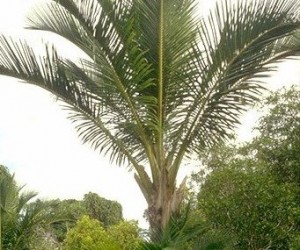The botanical term for Sago palm is known as Metroxylon Sagu. It has large pinnate leaves ranging from 6 to 9 meters long and stout creeping or ascending stems up to 15 meters high.
It resembles that of a coconut but much sturdier. It has a very thick stem and grow in clumps. Every year, it bears a single flower spike that blossoms into fruit clusters just like the date palm.
The sago palm is a normal swamp tree that can produce fifty palms suitable for filling per hectare each year according to the Food and Agricultural Organization (FAO). There are many uses of the Sago palm. The sap is used for the production of sugar, a fermented drink like wine, vinegar and distilled alcohol.
Aside from alcohol, other by products are fructose, dextrose, animal fodder, glue and particle board. This palm is known to grow in tropical countries like Indonesia, Malaysia and the Philippines. Sago flour is produced from the trunk when the palm is about 12 years old, it yields about 150 t0 300 kilograms of flour.
The process of extracting the flour from the sago plant entails the cutting of the palm, pulverizing the pith then wash it with water to separate the starch from the fiber. The starch that is carried in suspension in the water is allowed to settle and after several washings, the starch is dried and stored for use.
The flour is used for baking bread and its shelf life would last for many days compared to bread derived from wheat flour.
Indonesia has put up a prototype for sago production intended for commercial use. The Sago flour can also be processed into bread, cracker biscuits, noodles and others.
